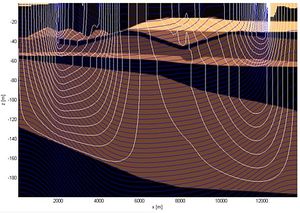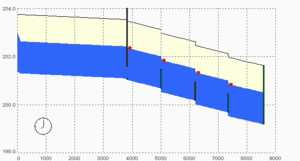Models
A model is probably the most general concept that exists and as such used by all researchers in all fields as basic tool. Without models no life, or at least no description of what life is in the first place. Let’s define a model as any description of a real world process, in words, in scale or in mathematical/numerical terms. It is obvious that, the real world being so complex, a model is always a simplified version of the process it is trying to mimic. But still, once a researcher has a model, an unlimited number of scenarios can be evaluated with it, scenarios that could never be tested in the real world. What will happen in the future? What will happen if we change this, or that, or both? You can imagine that a model in the hands of a scientist is like the magic wand in the hand of a wizard.
Now how do we use models? If we have historical data of the initial state and the boundary conditions of the model, we can replay situations from the past and see if our model reproduces the same outcome as the historical measurements. Then we can apply predicted boundary conditions (for example climate change scenarios) and see what the future may look like. If we do not like that future, we can test different measures that can be taken now in order to improve that projected future. If we find a measure that is technically feasible, of which the benefits have a higher economic value that the costs of construction and maintenance, that is presently payable, that is accepted by the stakeholders and the political powers that be, this measure should be implemented in the real world system.

Figure 1: Physical scale model of controlled canal
When we speak about water resources management, there are numerous models that are very relevant in our staff’s research. We have models that describe the intended interactions between water management and society in terms of written laws, we have scale models of canals (see Fig. 1) with running water, but mostly we have mathematical descriptions of physical hydrological processes that are simulated in a computer. These numerical models are made for all sub-processes of the water cycle, such as rainfall-runoff, groundwater flow (see Fig. 2 and 3), river flow, controlled irrigation canals (see Fig. 4), overland flow, water quality, and so on, and so on.

Figure 2: Numerical groundwater model

Figure 3: Numerical groundwater model for contaminant transport
